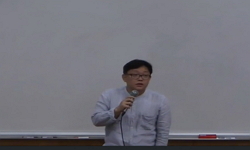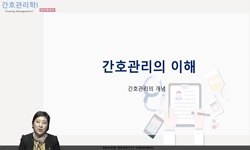국내 제2금융권의 금융 산업은 2008년 금융위기로 인한 부실자산의 증가와 PF대출 중심의 자산구조개편이 요구되는 상황에 이르렀다. 2011년 저축은행 사태로 일컬어지는 강력한 구조조정 이...
http://chineseinput.net/에서 pinyin(병음)방식으로 중국어를 변환할 수 있습니다.
변환된 중국어를 복사하여 사용하시면 됩니다.
- 中文 을 입력하시려면 zhongwen을 입력하시고 space를누르시면됩니다.
- 北京 을 입력하시려면 beijing을 입력하시고 space를 누르시면 됩니다.
확률변경분석을 이용한 국내 저축은행별 비용효율성과 결정요인 분석 = Analysis of the Cost Efficiency and Determinating Factors of the Korean Saving Banks : Using Stochastic Frontier Analysis
한글로보기https://www.riss.kr/link?id=T15810421
- 저자
-
발행사항
부산 : 부산대학교 대학원, 2021
-
학위논문사항
학위논문(석사) -- 부산대학교 대학원 , 글로벌경제컨설팅전공 , 2021. 2
-
발행연도
2021
-
작성언어
한국어
- 주제어
-
DDC
332.21 판사항(23)
-
발행국(도시)
부산
-
형태사항
v, 43 장 : 삽화, 표 ; 30 cm
-
일반주기명
지도교수: 차경수
참고문헌: 장 41 -
UCI식별코드
I804:21016-000000148743
- DOI식별코드
- 소장기관
-
0
상세조회 -
0
다운로드
부가정보
국문 초록 (Abstract)
이는 부동산PF여신으로 대표되는 고위험 고액여신의 부실이 확대된 결과로서 2011년부터 2014년까지 강도 높은 구조조정을 통해 현재의 79개 저축은행만이 살아남게 되었다. 이후 은행업권의 자본규제 기준을 목적으로 발표된 바젤III가 2020년 1월부터 자산 1조원 이상 저축은행에도 적용되어 저축은행도 강화된 건전성 규제를 적용받게 되었다.
2016년 12월에는 국내최초 인터넷 전문은행인 K뱅크 은행업 영위 인가에 이어 2017년 4월 카카오뱅크에 대한 인가로 본격적인 인터넷 전문은행 시대의 막을 올렸으며, 은행업권의 비대면대출 확대, 시중은행의 중금리 상품 출시, 계좌이동제 및 오픈뱅킹 제2금융권 확대시행을 통한 금융시장 내 경쟁구도가 심화되었다.
금융 산업 전반의 경쟁구도 심화와 강화된 규제에 적절히 대응하기 위해서는 국내 저축은행들의 효율적 운영이 필수적이라고 보인다. 이를 위해 2000년도 이후부터 최근까지의 저축은행의 비용효율을 확인해 보고 대응책 마련이 필요하다고 판단되었다.
이에 본 연구에서는 확률변경분석을 활용하여 2000년 이후부터 2019년까지 20년간의 자료를 이용하여 우리나라 자산규모 상위 20개 저축은행의 효율성을 비용측면에서 추정해보고 비용비효율성 결정요인들과의 상관관계를 분석해보았다. 비용효율성은 기간별로 분석하였다. 2000년부터 2019년까지 분석대상 기간 동안의 국내 저축은행의 비용효율성을 연도별, 영업지역별로 구분하여 분석하고, 분석결과를 통해 국내 일반은행의 비용효율성의 특징과 그 결정요인에 대해 분석해 보고자 하였다. 먼저 기간별 비용효율성의 변화를 살펴보면 우선 분석대상 기간의 첫 연도인 2000년에는 평균 0.177의 비용효율성이 추정되었다. 이후 2019년에 이르기까지 비용 효율성은 지속적인 증가 추세를 보이고 있는 것을 알 수 있었다. 총자산회전율, 예수금회전율 등의 증가가 비용효율성의 증대로 이어지는 것을 실증분석을 통해 알아낸 바 있으며, 과도한 NIM의 추구는 대손비용의 증가로 이어져 비용비효율성을 증대시키는 것으로 추정되었다. 이에 국내 저축은행은 효율적인 자산의 운용뿐만 아니라 선진적인 여신심사기법을 도입하여 대손비용 절감 등 금융환경 변화에 대응 가능한 보다 효율적인 전략이 추진되어야만 할 것이다.
또한 물리적인 점포의 개수 증가가 비용비효율성을 증대시킴을 알 수 있고 노동투입보다 자본의 투입이 총비용의 증가에 크게 기여함을 볼 수 있으므로 인원감축 보다 물리적인 지점의 숫자를 적정선으로 유지하는 것이 비용절감에 필수적이라고 하겠다. 구체적인 전략으로는 현재 시중은행에서 전반적으로 추진 중인 Hub&Spoke 전략과 같은 유기적인 지점망 구축전
략이 필요할 것으로 판단된다.
국내 제2금융권의 금융 산업은 2008년 금융위기로 인한 부실자산의 증가와 PF대출 중심의 자산구조개편이 요구되는 상황에 이르렀다. 2011년 저축은행 사태로 일컬어지는 강력한 구조조정 이후 부실저축은행은 퇴출되거나 금융지주회사와의 합병을 통해 저축은행의 대형화가 진행되었다,
이는 부동산PF여신으로 대표되는 고위험 고액여신의 부실이 확대된 결과로서 2011년부터 2014년까지 강도 높은 구조조정을 통해 현재의 79개 저축은행만이 살아남게 되었다. 이후 은행업권의 자본규제 기준을 목적으로 발표된 바젤III가 2020년 1월부터 자산 1조원 이상 저축은행에도 적용되어 저축은행도 강화된 건전성 규제를 적용받게 되었다.
2016년 12월에는 국내최초 인터넷 전문은행인 K뱅크 은행업 영위 인가에 이어 2017년 4월 카카오뱅크에 대한 인가로 본격적인 인터넷 전문은행 시대의 막을 올렸으며, 은행업권의 비대면대출 확대, 시중은행의 중금리 상품 출시, 계좌이동제 및 오픈뱅킹 제2금융권 확대시행을 통한 금융시장 내 경쟁구도가 심화되었다.
금융 산업 전반의 경쟁구도 심화와 강화된 규제에 적절히 대응하기 위해서는 국내 저축은행들의 효율적 운영이 필수적이라고 보인다. 이를 위해 2000년도 이후부터 최근까지의 저축은행의 비용효율을 확인해 보고 대응책 마련이 필요하다고 판단되었다.
이에 본 연구에서는 확률변경분석을 활용하여 2000년 이후부터 2019년까지 20년간의 자료를 이용하여 우리나라 자산규모 상위 20개 저축은행의 효율성을 비용측면에서 추정해보고 비용비효율성 결정요인들과의 상관관계를 분석해보았다. 비용효율성은 기간별로 분석하였다. 2000년부터 2019년까지 분석대상 기간 동안의 국내 저축은행의 비용효율성을 연도별, 영업지역별로 구분하여 분석하고, 분석결과를 통해 국내 일반은행의 비용효율성의 특징과 그 결정요인에 대해 분석해 보고자 하였다. 먼저 기간별 비용효율성의 변화를 살펴보면 우선 분석대상 기간의 첫 연도인 2000년에는 평균 0.177의 비용효율성이 추정되었다. 이후 2019년에 이르기까지 비용 효율성은 지속적인 증가 추세를 보이고 있는 것을 알 수 있었다. 총자산회전율, 예수금회전율 등의 증가가 비용효율성의 증대로 이어지는 것을 실증분석을 통해 알아낸 바 있으며, 과도한 NIM의 추구는 대손비용의 증가로 이어져 비용비효율성을 증대시키는 것으로 추정되었다. 이에 국내 저축은행은 효율적인 자산의 운용뿐만 아니라 선진적인 여신심사기법을 도입하여 대손비용 절감 등 금융환경 변화에 대응 가능한 보다 효율적인 전략이 추진되어야만 할 것이다.
또한 물리적인 점포의 개수 증가가 비용비효율성을 증대시킴을 알 수 있고 노동투입보다 자본의 투입이 총비용의 증가에 크게 기여함을 볼 수 있으므로 인원감축 보다 물리적인 지점의 숫자를 적정선으로 유지하는 것이 비용절감에 필수적이라고 하겠다. 구체적인 전략으로는 현재 시중은행에서 전반적으로 추진 중인 Hub&Spoke 전략과 같은 유기적인 지점망 구축전
략이 필요할 것으로 판단된다.
다국어 초록 (Multilingual Abstract)
This situation has occurred for the following reasons. Since 2002 microcredit loan was not any more profitable market. Saving banks has sought to gain new revenue sources through the handling of real estate PF loans. and due to the sluggish real estate market and the economic recession the insolvency of high-risk, high-volume loans has expanded. As a result, intensive restructuring was carried out from 2011 to 2014, and now there are 79 savings banks.
Under these circumstances, Basel Committee on Banking Supervision issued Basel III for the purpose of capital regulation standards in the banking sector. In line with this, savings banks with assets of 1 trillion won or more raised their BIS equity capital ratio from 7% to more than 8% on January 1, 2018 (two years of probation) to apply stricter health regulations.
Since then, the era of Internet-specialized banks has begun in April 2017 with the approval of Kakao Bank, following the first Internet-specialized bank in Korea in December 2016, and competition in the financial market has intensified through the expansion of non-face-to-face loans in the banking sector, the launch of medium-interest loan in commercial banks.
In order to improve efficiency in the domestic financial industry, respond to financial regulations that are expanding to the areas of savings banks, and to cope with the intensifying competition in the financial industry, efficient operation of domestic savings banks is essential. To this end, it is necessary to analyze the cost efficiency from 2000 to recent years.
In this study, Using SFA(stochastic frontier analysis) to estimate the efficiency of the top 20 savings banks in Korea's to identify the main factors determinating cost efficiency of banks. The determinants of using the data of 20 of Saving banks for 20 years(2000-2019). The cost efficiency has been analyzed by year-on-year basis.
Through these empirical estimation, following facts are found :
First of all, looking at the changes in cost efficiency over time, the cost efficiency was estimated at an average of 0.177 in 2000, the first year of the period analyzed. Since then, the cost efficiency has continued to increase until 2019.
The korean secondary financial sector has reached a situation where an increase in bad assets caused by the 2008 financial crisis and a restructuring of assets centered on PF loans were required. After the strong restructuring, referred to as the savi...
The korean secondary financial sector has reached a situation where an increase in bad assets caused by the 2008 financial crisis and a restructuring of assets centered on PF loans were required. After the strong restructuring, referred to as the savings bank crisis in 2011, Bad savings banks were either expelled or merged into financial holding companies. and as a result, the asset soundness of savings banks has improved.
This situation has occurred for the following reasons. Since 2002 microcredit loan was not any more profitable market. Saving banks has sought to gain new revenue sources through the handling of real estate PF loans. and due to the sluggish real estate market and the economic recession the insolvency of high-risk, high-volume loans has expanded. As a result, intensive restructuring was carried out from 2011 to 2014, and now there are 79 savings banks.
Under these circumstances, Basel Committee on Banking Supervision issued Basel III for the purpose of capital regulation standards in the banking sector. In line with this, savings banks with assets of 1 trillion won or more raised their BIS equity capital ratio from 7% to more than 8% on January 1, 2018 (two years of probation) to apply stricter health regulations.
Since then, the era of Internet-specialized banks has begun in April 2017 with the approval of Kakao Bank, following the first Internet-specialized bank in Korea in December 2016, and competition in the financial market has intensified through the expansion of non-face-to-face loans in the banking sector, the launch of medium-interest loan in commercial banks.
In order to improve efficiency in the domestic financial industry, respond to financial regulations that are expanding to the areas of savings banks, and to cope with the intensifying competition in the financial industry, efficient operation of domestic savings banks is essential. To this end, it is necessary to analyze the cost efficiency from 2000 to recent years.
In this study, Using SFA(stochastic frontier analysis) to estimate the efficiency of the top 20 savings banks in Korea's to identify the main factors determinating cost efficiency of banks. The determinants of using the data of 20 of Saving banks for 20 years(2000-2019). The cost efficiency has been analyzed by year-on-year basis.
Through these empirical estimation, following facts are found :
First of all, looking at the changes in cost efficiency over time, the cost efficiency was estimated at an average of 0.177 in 2000, the first year of the period analyzed. Since then, the cost efficiency has continued to increase until 2019.
목차 (Table of Contents)
- <차 례>
- I. 서 론 1
- 1. 연구의 배경 및 목적 1
- 2. 연구의 방법 및 구성 3
- <차 례>
- I. 서 론 1
- 1. 연구의 배경 및 목적 1
- 2. 연구의 방법 및 구성 3
- II. 국내 저축은행 산업의 현황 6
- 1. 국내 저축은행 산업의 구조변동 6
- 2. 국내 저축은행 산업의 비용현황 8
- III. 이론모형 11
- 1. 선행연구 11
- 2. 기존 연구와의 차이점 14
- 3. 이론모형 15
- 1) 비용함수(Cost Function) 15
- 2) 확률변경분석(Stochastic Frontier Analysis) 17
- IV. 실증 분석 20
- 1. 변수의 구성 20
- 2. 통계자료의 기술통계량 22
- 3. 비용효율성 가설검정 28
- 4. 비용효율성 분석결과 30
- V. 결론 38












